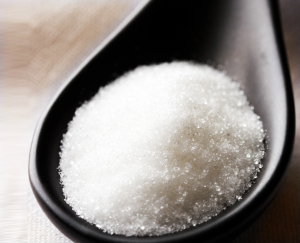Penn Herb Wellness Guide
Sugar-Free Ways to Satisfy Your Sweet Tooth

More and more people are side-stepping sugary treats to avoid unwanted calories, to take better care of their teeth and blood sugar, and to avoid burdening their immune system, among other reasons. So what to do when the urge for a sweet treat strikes? From a sugarsubstitute to a whole piece of fruit, consider these options. Keep in mind that the long-term effects ofmany manufactured sweeteners have not been well studied and some have knowndownsides, and evaluate the relative pros and cons against your personal health needs and goals.
Try something sweet in your cup
Looking for something sugary to stir into your coffee or tea or sprinkle onto your morning cereal?
- Xylitol, a low-calorie sweetener, actually makes teeth healthier. It can be hard to find as a tabletop sweetener, but it’s readily available as an ingredient in gums and candies, though.
- Equal and Nutrasweet (aspartame) pack a sweet punch without adding any calories.
- Sweet’N Low (saccharin) sweetens drinks; it’s been around the longest of the sugar substitutes.
- Splenda (sucralose) provides sweetness without saccharin’s bitter aftertaste.
- Stevia, an intensely sweet herb with no calories, is a tasty option thatis available in powder packets or liquid drops.Kelley Hoffman, a stevia-user in the Pacific Northwest, notes, “It can take a little trial and error to figure out the perfect amount for how sweet you like your coffee or tea, but once you know how much works for you, stevia’s a great sugar substitute.”
Tricks for tasty un-sugary treats
Not every sugar substitute can handle the heat of the kitchen, in part because recipes that call for sugar rely not just on the sweet quality of sugar, but also to add volume, moisture, tenderness, and provide browning. Recipes that don’t need any baking or rising adapt most easily to sugar substitutes.
- Splenda is pretty easy to work with in the kitchen; it replaces sugar cup for cup. Keep an eye on your Splenda-sweetened dishes, though, since they cook a bit more quickly.
- Sunett (Acesulfame K) can be used to cook and bake, although it is far more common as an ingredient in packaged foods, and can have a bitter aftertaste.
- Sweet’N Low works fine in both hot and cold foods, but again has a bitter aftertaste in large amounts.
- Most recipes can be adapted for stevia; however, since such a small amount of stevia sweetens a dish, it can help to add in a cup of unsweetened applesauce to take the place of the missing sugar.
- Sorbitol, a low-calorie sugar alternative, can be used in some recipes (like jam), although it is not readily available for home use; it’s more common as an ingredient in “diet” drinks, foods, and gums.
- Lastly, when looking at your cooking options, skip substitutes like Equal and Nutrasweet; they can’t be used for cooking because they lose their sweet flavor at high temperatures.
Go natural
Whether your sweetener of choice has known health risks or is still establishing its safety record, it’s always wise to take advantage of the many natural options out there to avoid depending on any manufactured substitutes to satisfy your sweetness needs. All substitutes have potential deterrents, such as taste and (stevia aside) potential physical side effects. So weigh those against your reasons for skipping the sugar, and remember to reach for in-season fruit and other treats to get that sweet satisfaction.
Copyright 2025 TraceGains, Inc. All rights reserved.


